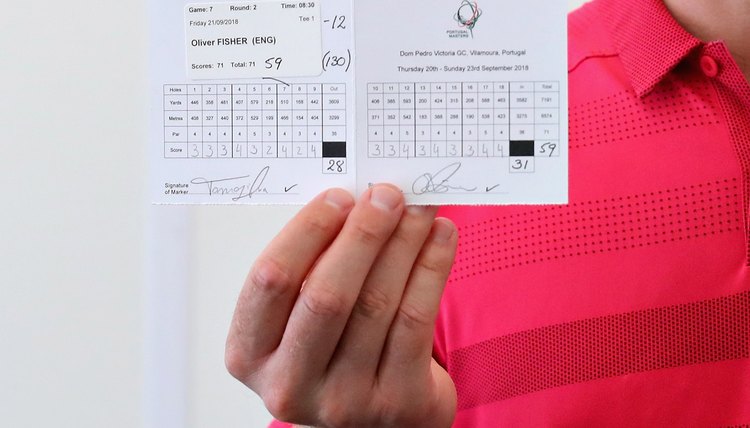What Does Handicap Mean in Golf?

The term "handicap" is so often thrown around golf circles; but for many beginner golfers, the term and the official handicap system as a whole, is a foreign one.
Fortunately, there is a hard-and-fast definition for handicap, as well as easy ways to go about calculating what your golf handicap might be. From there, it's on to improving said handicap.
Here’s everything you need to know about handicaps in golf.
What does handicap mean in golf?
The United States Golf Teachers Federation (USGTF) defines a player’s handicap as "a measure of his current ability over an entire round of golf, signified by a number. The lower the number, the better the golfer is." A handicap essentially signifies the number of strokes above or below par a golfer should be able to play in a given 18-hole round of golf at different courses at any golf club.

Quality Handicaps
According to the USGTF, handicaps are based on a predetermined golf course rating in accordance to the difficulty of the courses at which a golfer has played. The maximum handicap for a male golfer is 36.
For female golfers, this number increases to 40. Handicaps are based on recent play and can change over time as a golfer plays more rounds.
Fair Play
According to the USGTF, handicaps allow golfers of varying skill levels to even the playing field and compete against one another in the game of golf. The handicap index is useful in situations such as at a tournament, where players of various skill levels go up against one another, but can still be evenly matched based upon their handicap differential.
For instance, a 10-handicapper must offer a 15-handicapper five strokes before the round even commences (think of it as a head start of sorts, to use a racing analogy). In stroke play, the golfer who shoots the lowest net score (total strokes minus handicap) wins the round- this reflects how easy it is to perform a player’s handicap calculation and find their adjusted gross score.

Scorecard
The handicap numbers on a scorecard detail what the lower-handicapped golfer must offer the higher-handicapped golfer in terms of strokes when playing "match play" rules. For instance, if a 6-handicap golfer is facing a 12-handicap golfer and each hole is given a handicap number between 1 and 18, the 6-handicap golfer gives the 12-handicap golfer one stroke on six holes--the holes where the handicap is defined as 1, 2, 3, 4, 5 and 6.
Improving a Handicap
To improve--or decrease--one's handicap, it is quite simple--practice and purchase golf lessons to improve your average score, and in turn, improve your handicap. For novice golfers, the handicap score is bound to decrease quickly right off the bat through practice and lessons, and over time, the number will continue to erode.
As your 18-hole scores continue to drop and you go from a triple bogey golfer to a double bogey golfer so just a bogey golfer, you will quickly reach the lowest possible handicap for you, and have more confidence when stepping up to the tee out on the course.
